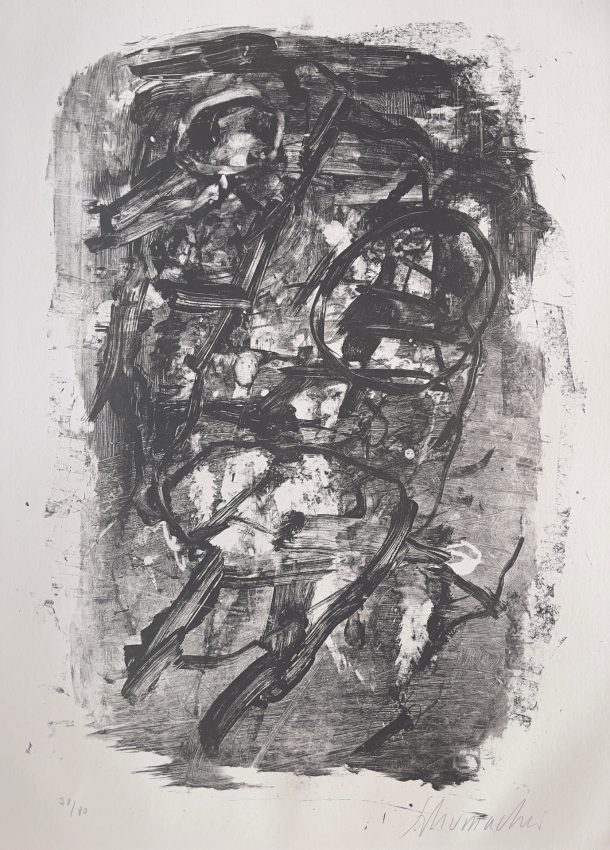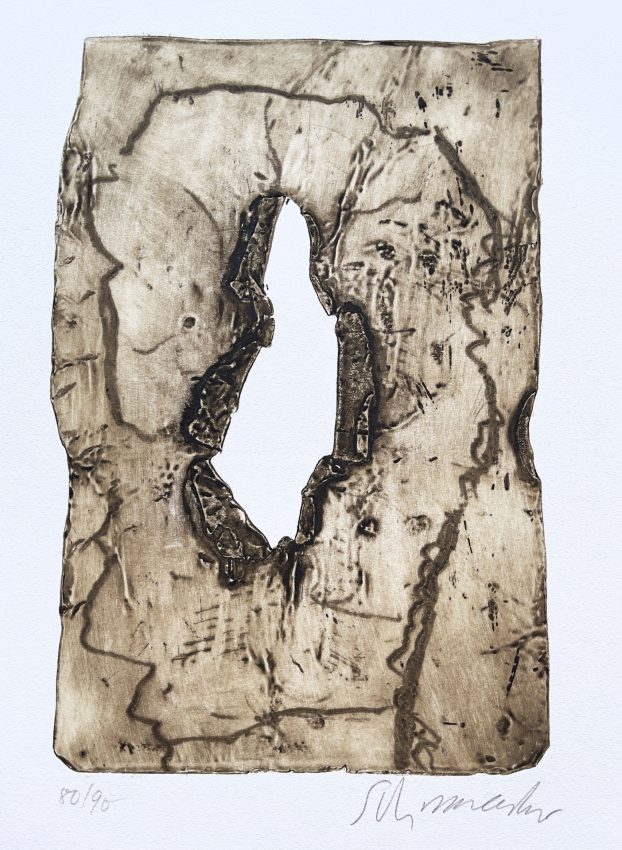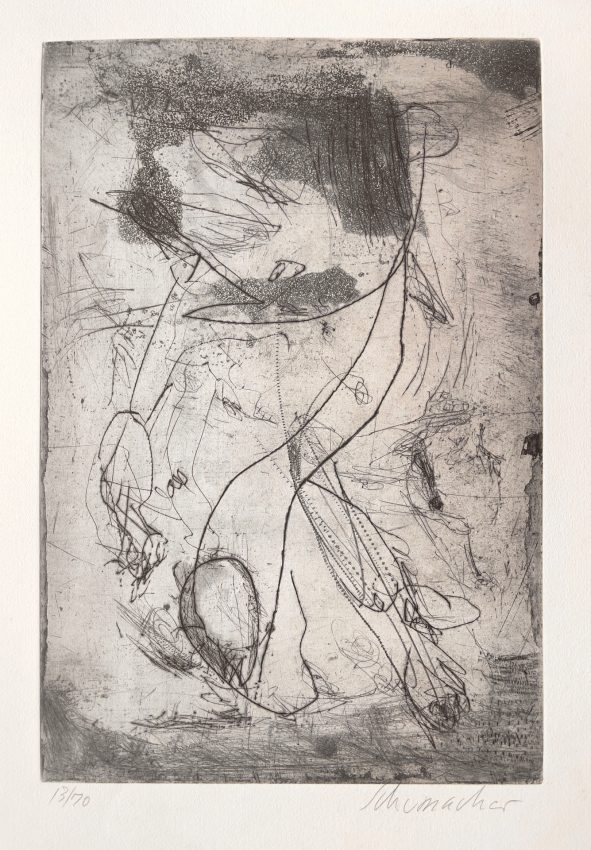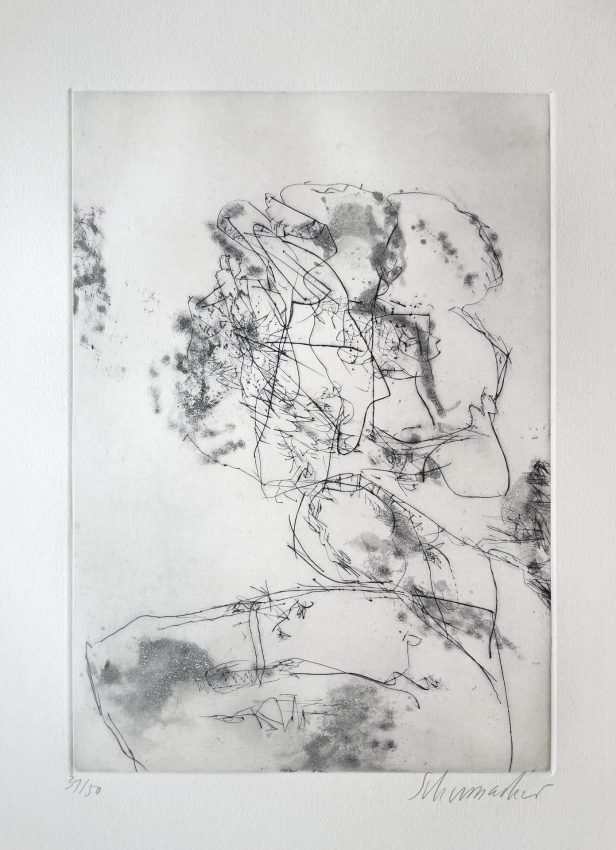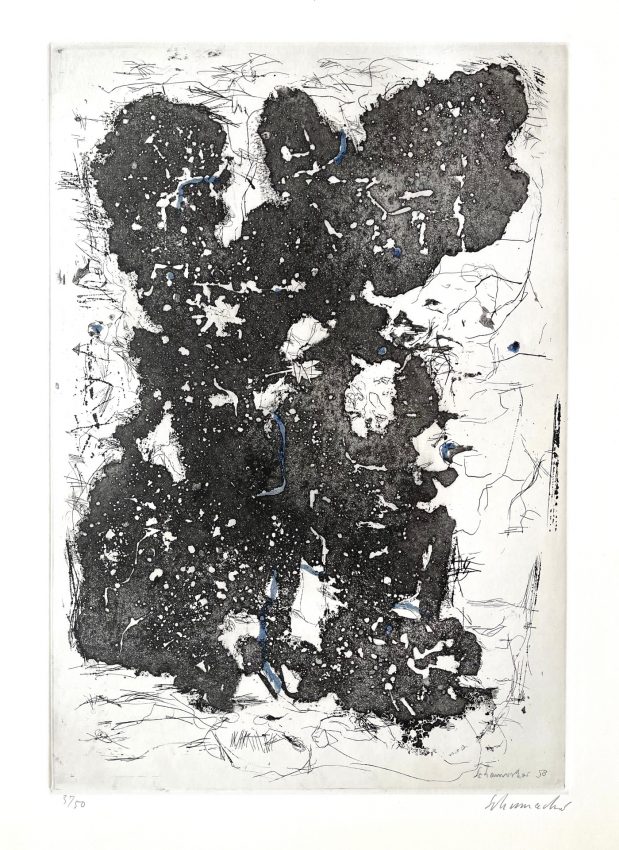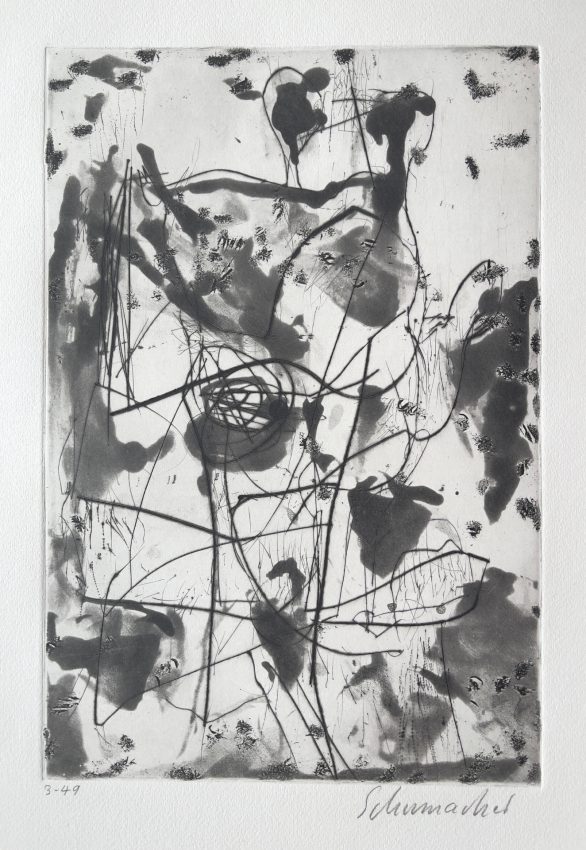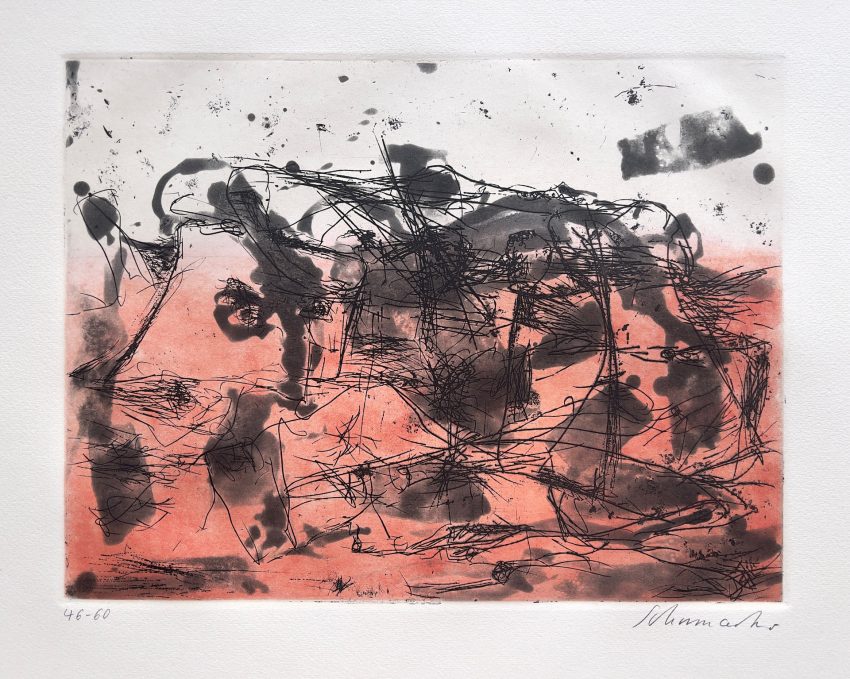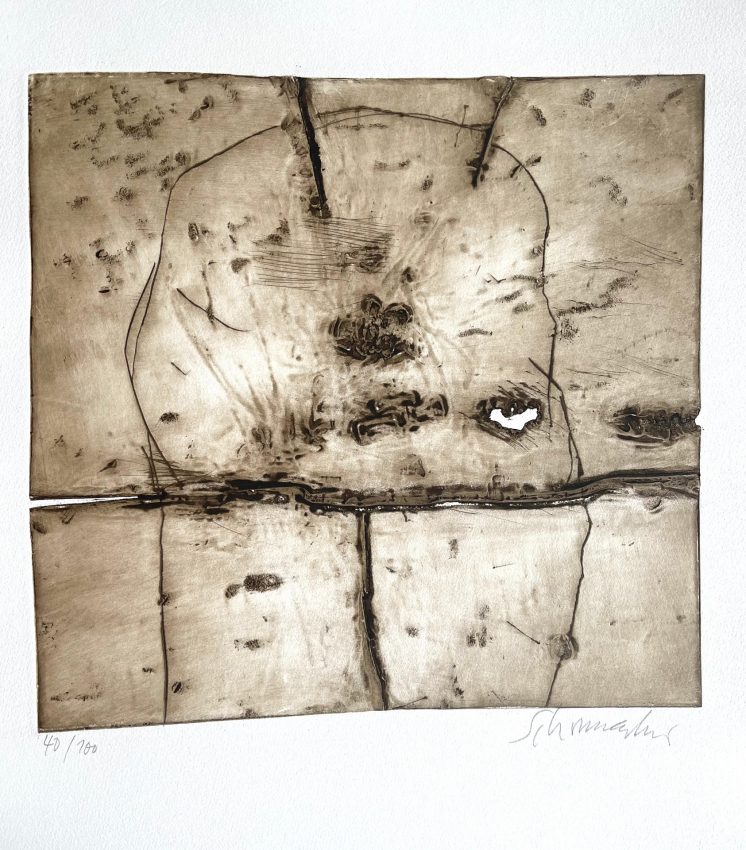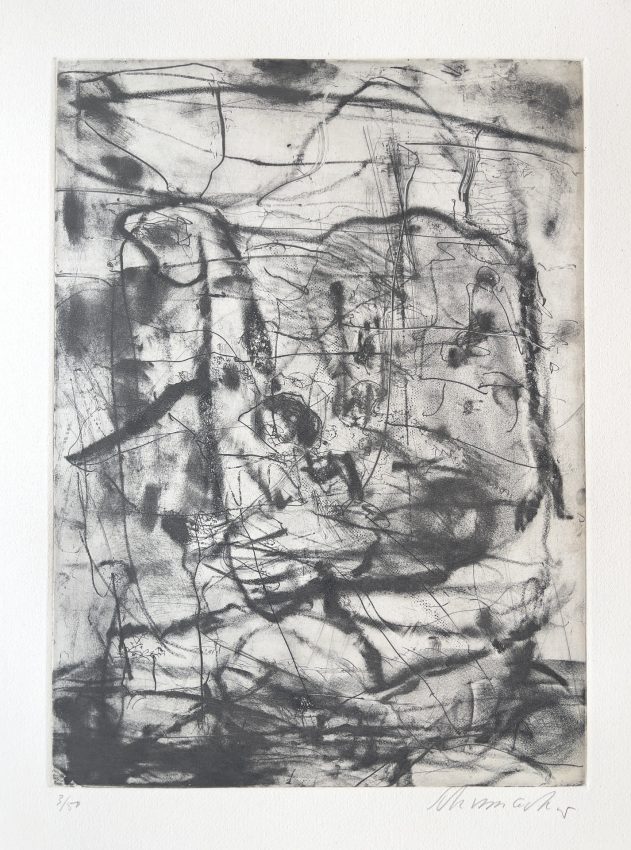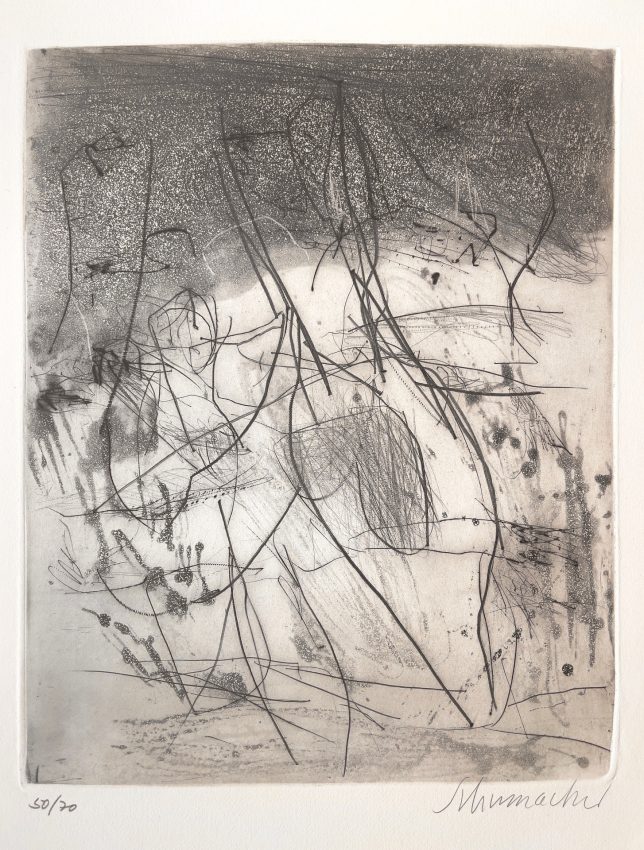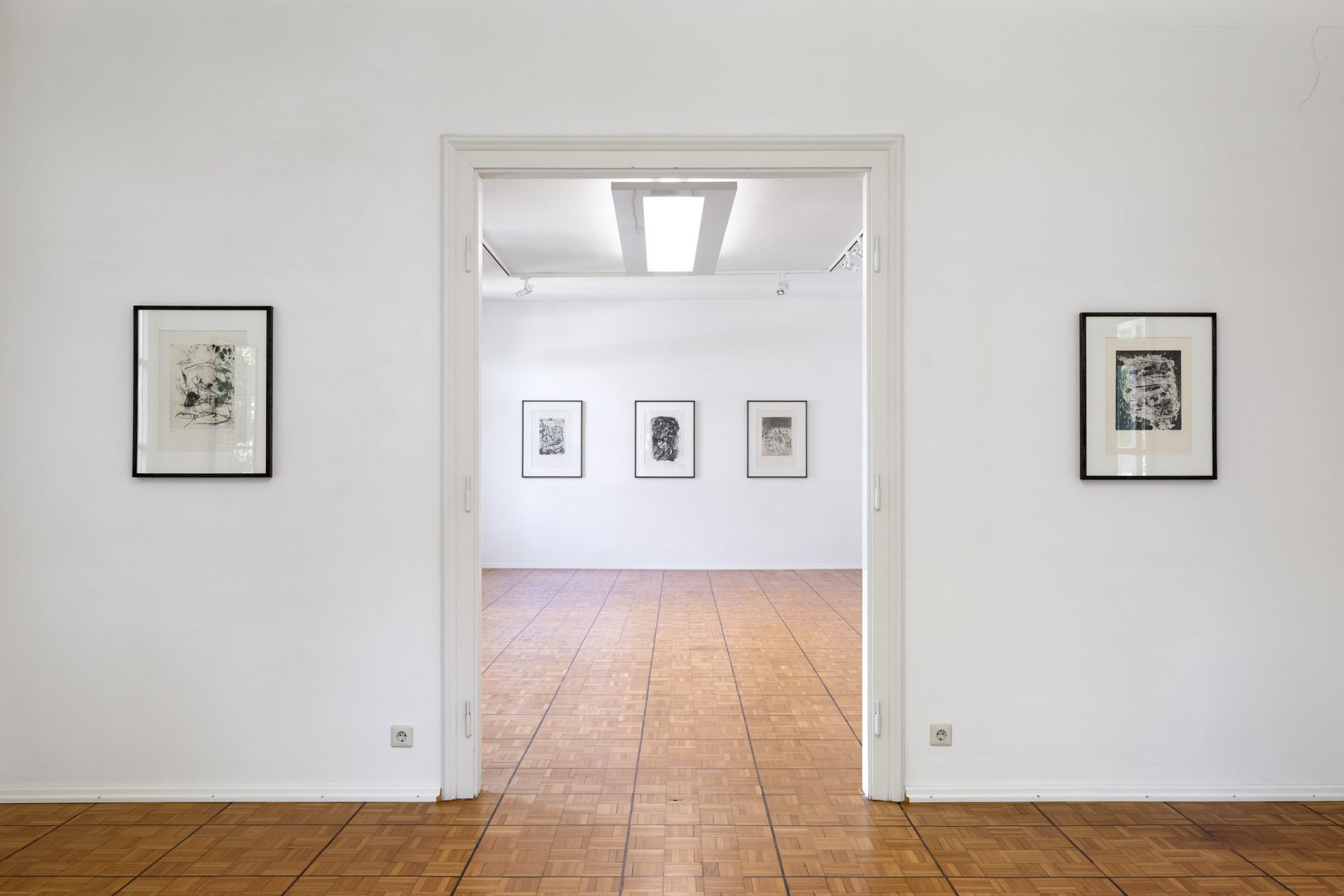
Exploration of New Liberties
Emil Schumacher
2 Sep 2022 – 30 Apr 2023
Beletage
Opening: 2 Sep 2022, 7:30 pm
Introduction: Barbara Wagner
Scratches and holes, destruction and re-emergence, earthy hues and high-contrast black and white. These are apt assessments for not only Emil Schumacher’s etchings, but also the zeitgeist of the 1950s. The works, which at first glance seem entirely abstract, even arbitrary, reveal clear references to the outside world upon closer inspection: Heads, horses and cows are recurring motifs.
Schumacher, who studied commercial art in Dortmund until 1933, resumed his work as a freelance artist immediately after the end of the Second World War. He was quickly confronted with a lack of materials and difficult economic conditions in post-war Germany. Printing workshops and publishers were in short supply until the end of the 1950s, and the etchings exhibited here mark the beginning of a new development in Schumacher’s work that would have previously not been possible, even in purely logistical terms.
As a standard bearer of Informel, Schumacher quickly broke away from figurativeness. For him this was an inevitable step, stemming from the horrific experiences of fascism and scenes of violence – not unlike the philosopher Adorno. It was a time to turn away from limiting traditions. Explicit form and color were rendered secondary; movement alone, the artistic gesture, and the new materiality migrated to the center of his works. Nevertheless, elements of abstracted life persisted and can be uncovered. The plants, fruits, dancers, and undergrowth entice us to take a mental stroll.
“Everything that is […] is formless and yet form,” is how Schumacher himself describes it, and with astonishment one realizes how he and his fellow Informel artists do not manage to protect their unruly works from the eyes of the viewer. Every brushstroke, every application of paint, every spontaneous movement is revealed. The drama and tension that emerge from Schumacher’s large-scale paintings are also expressed in the smaller etchings. The immediacy of his works fascinates and allows our gaze to wander in all directions, and his prints in particular achieve a remarkable contrast between delicacy of material and power of the motif.
The 25 works published by Abstracta-Verlag are kindly made available to us for the exhibition by Thomas Schiessel, son of the former publisher. We would like to express our sincere thanks for his generosity. All proceeds from the sale of the exhibition will be donated to Christoffel Blindenmission e.V..
